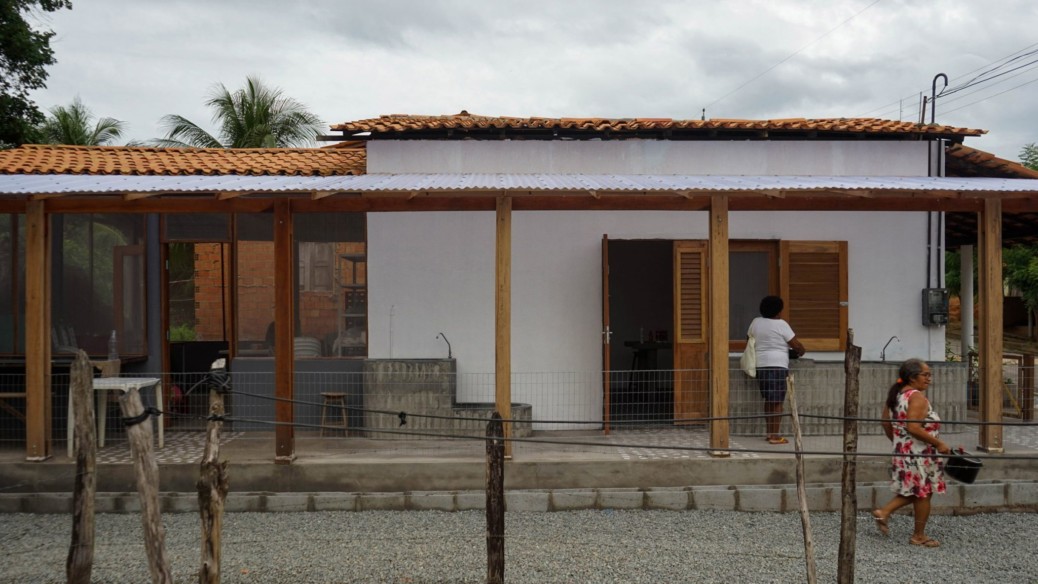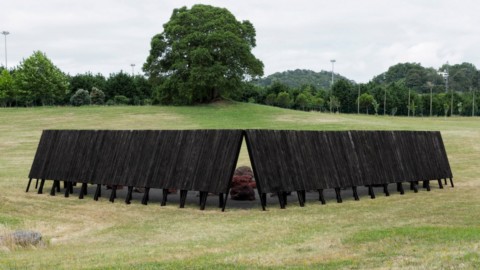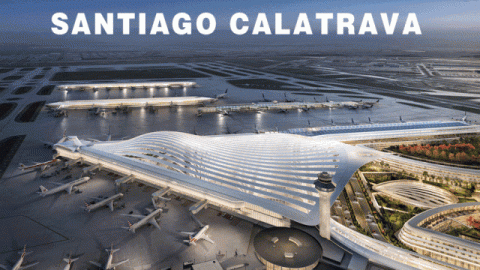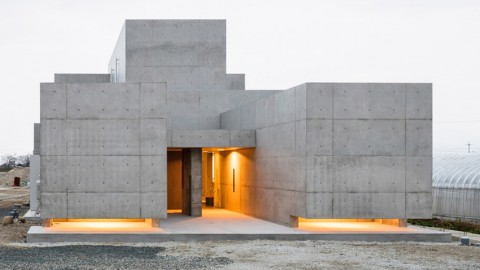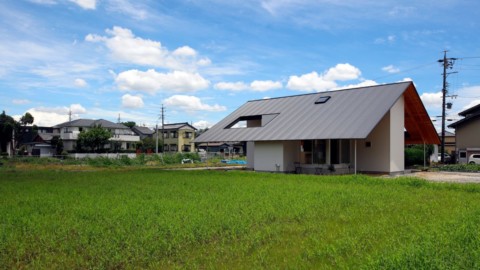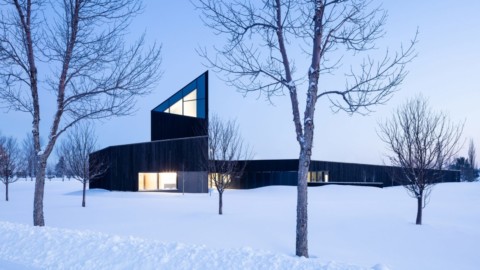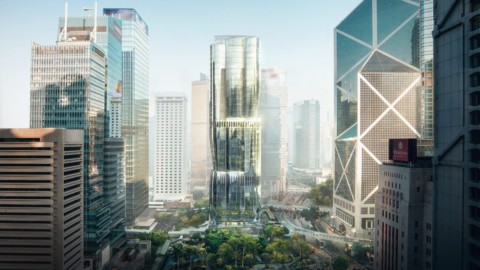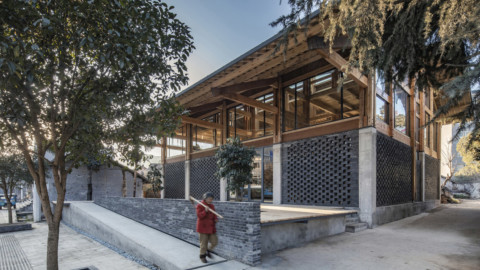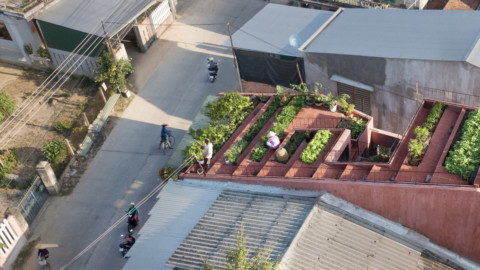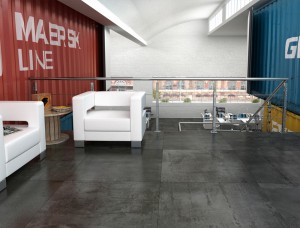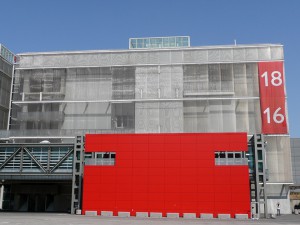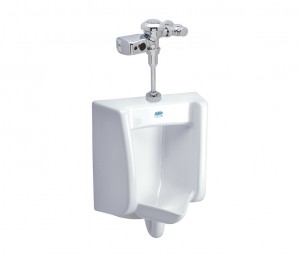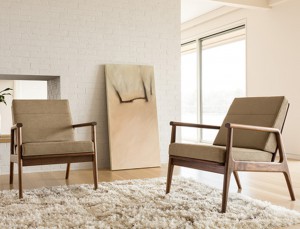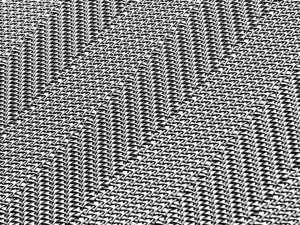São Paulo’s Estudio Flume has refurbished and extended the Babassu flour factory in Serra, Brazil to create a better workspace for the quebradeiras who turn babassu nuts into oil and flour.
The 18 quebradeiras that collect and break the nuts by hand to obtain the oil and flour – which comes from the mesocarp, or middle layer, of the babassu nut – needed an improved workspace that would comply with sanitary regulations and have space for better-suited equipment.
聖保羅的Estudio Flume公司對巴西塞拉的Babassu麵粉廠進行了翻新和擴建,為將basbassu堅果轉化為油和麵粉的quebradeiras創造了更好的工作空間。
18種quebradeiras可以手工收集和破碎堅果以獲得油和麵粉-來自巴西堅果的中果皮或中間層-需要改進的工作空間,以符合衛生法規並留有空間供更適合 設備。
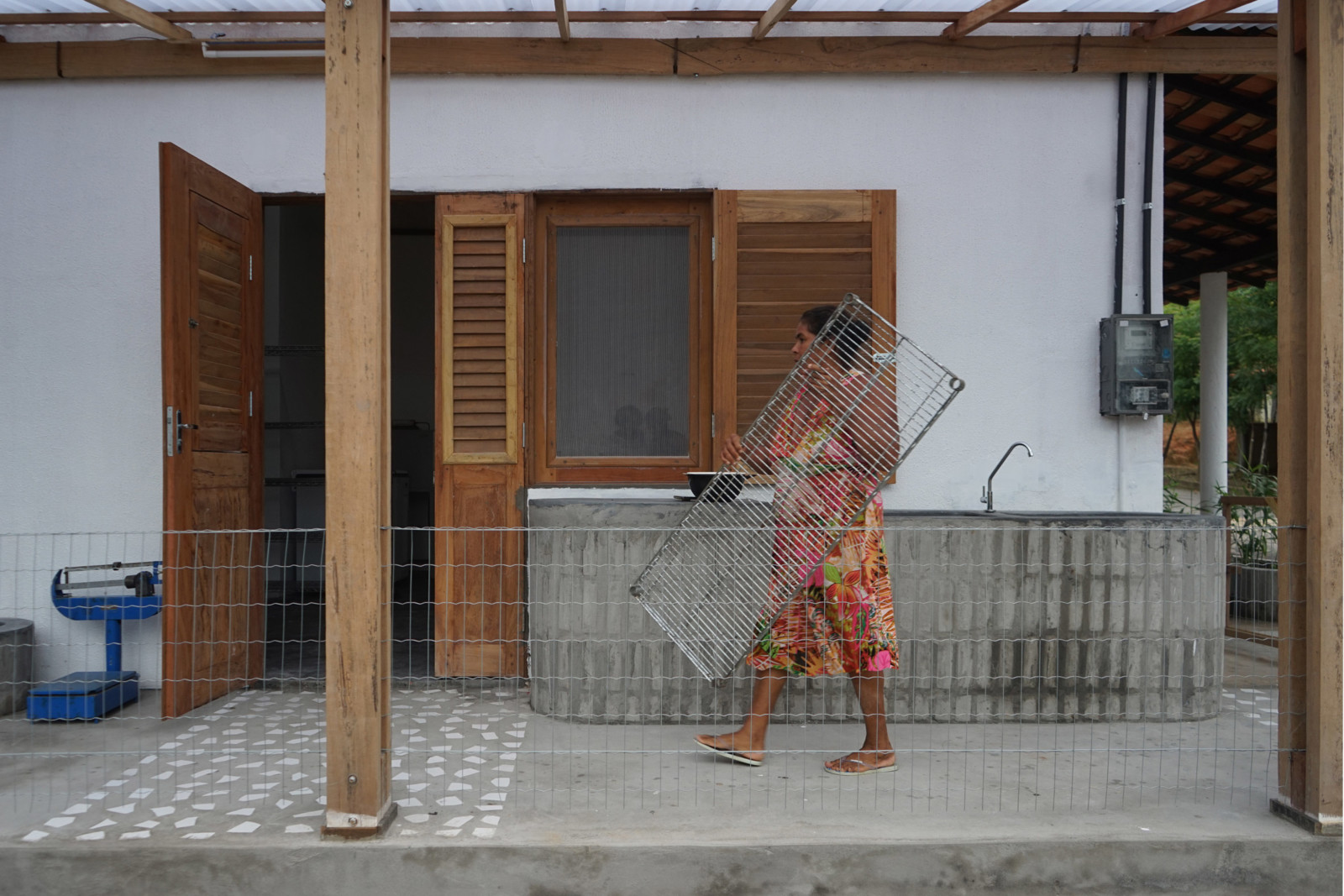
Estudio Flume set up a series of workshops with the quebradeiras to understand the flour production and what their expectations were for the workplace.
“Informed by these workshops, our strategy was to create an open plan workspace within the existing building and to add a low cost semi-open extension to improve the workflows between delivery, circulation and manufacture areas,” Estudio Flume’s founder Noelia Monteiro and architect German Nieva told Dezeen.
Estudio Flume與quebradeiras共同舉辦了一系列研討會,以了解麵粉生產以及他們對工作場所的期望。
Estudio Flume的創始人Noelia Monteiro和德國建築師表示:“受這些研討會的啟發,我們的策略是在現有建築物內創建一個開放式工作區,並添加低成本的半開放式擴展區,以改善交付,流通和製造區域之間的工作流程。” Nieva告訴了Dezeen。
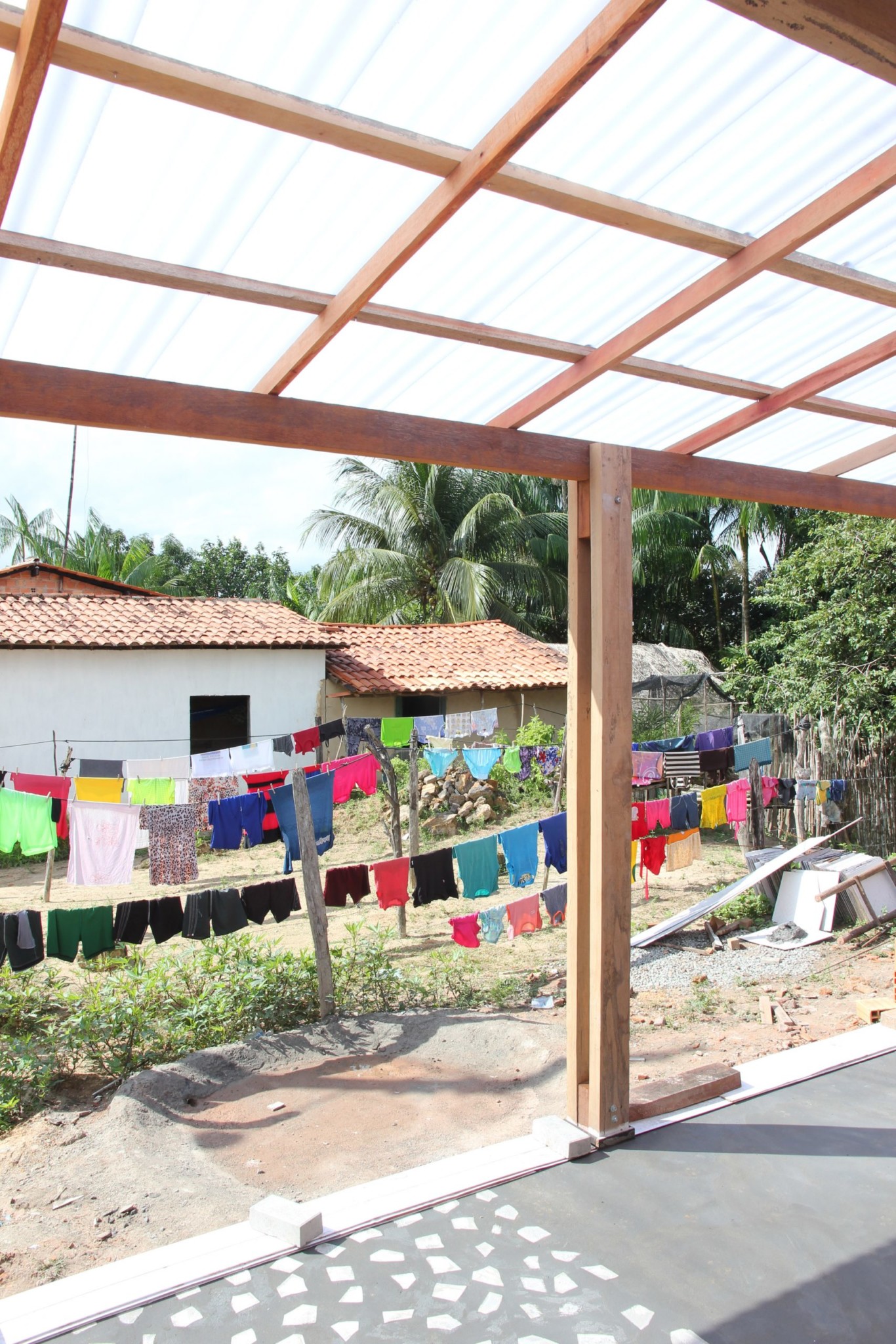
“These communities and especially the quebradeiras are doing an admirable job in protecting the rainforest, therefore it was a privilege to have had a chance to help them improve their economic opportunities,” the studio added.
The existing building was showing signs of deterioration caused by the hard work required to produce babassu flour.
This influenced the studio’s choice of new materials, which were selected based on their durability and resistance to impact.
該工作室補充說:“這些社區,尤其是quebradeiras在保護雨林方面做得令人欽佩,因此有幸有機會幫助他們改善經濟機會,這是一種榮幸。”
現有建築物顯示出生產巴巴蘇粉所需的辛苦工作而導致的惡化跡象。
這影響了工作室對新材料的選擇,這些新材料的選擇是基於其耐用性和抗衝擊性。
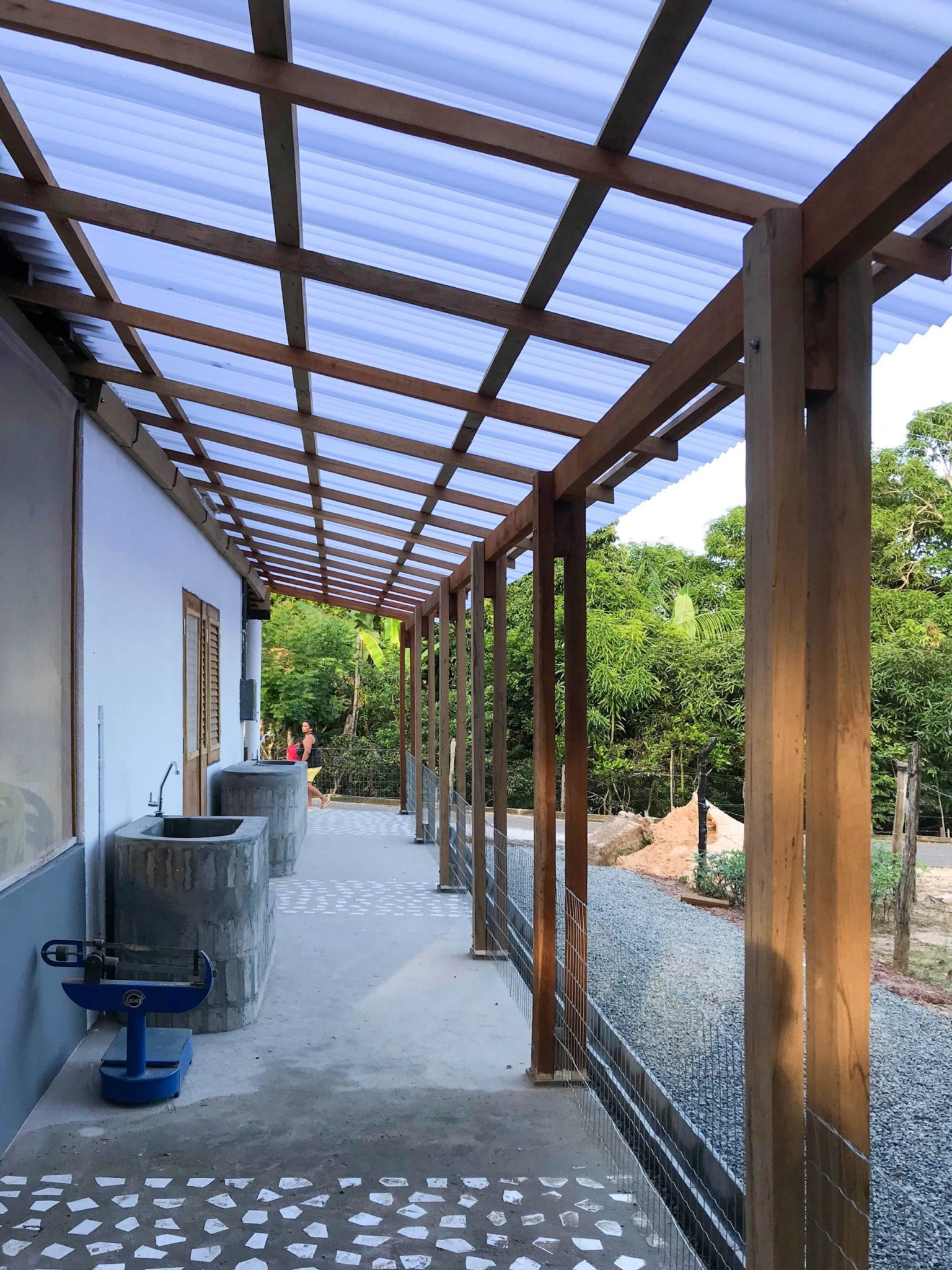
Estudio Flume removed the existing front and back doors and replaced these with perforated brick walls to create natural cross ventilation.
A new service area was created on one side of the building, built-in timber and covered with a frosted polycarbonate sheet that blocks UV light but lets 70 per cent of daylight in.
The polished concrete floor in this area incorporated some tiles kept from the demolition works.
This makes for a durable base for the bespoke water tanks used for cleaning the coconuts, which were designed in collaboration with the workers to fit their heights and working positions.
“The timber was locally sourced and the concrete blocks manufactured close to the site,” the studio said.
“We also used standardised products to avoid additional costs and minimising waste,” it added. “The sinks were made using prefabricated concrete pavement setts and the ceiling within the manufacturing area done with plywood.”
Estudio Flume拆除了現有的前門和後門,並用穿孔的磚牆取代了這些門,以實現自然的橫向通風。
在建築物的一側創建了一個新的服務區,內置木材並覆蓋有磨砂的聚碳酸酯板,該板可以阻擋紫外線,但可以讓70%的日光進入。
該地區的拋光混凝土地板上裝有一些拆除工程所保留的瓷磚。
這為用於清潔椰子的定制水箱提供了堅固的底座,該水箱是與工人共同設計的,以適合其身高和工作位置。
該工作室說:“木材是本地採購的,混凝土塊是在現場附近製造的。”
它補充說:“我們還使用標準化產品來避免增加成本並減少浪費。” “水槽是用預製的混凝土路面鋪墊板製成的,而製造區域內的天花板則用膠合板製成。”
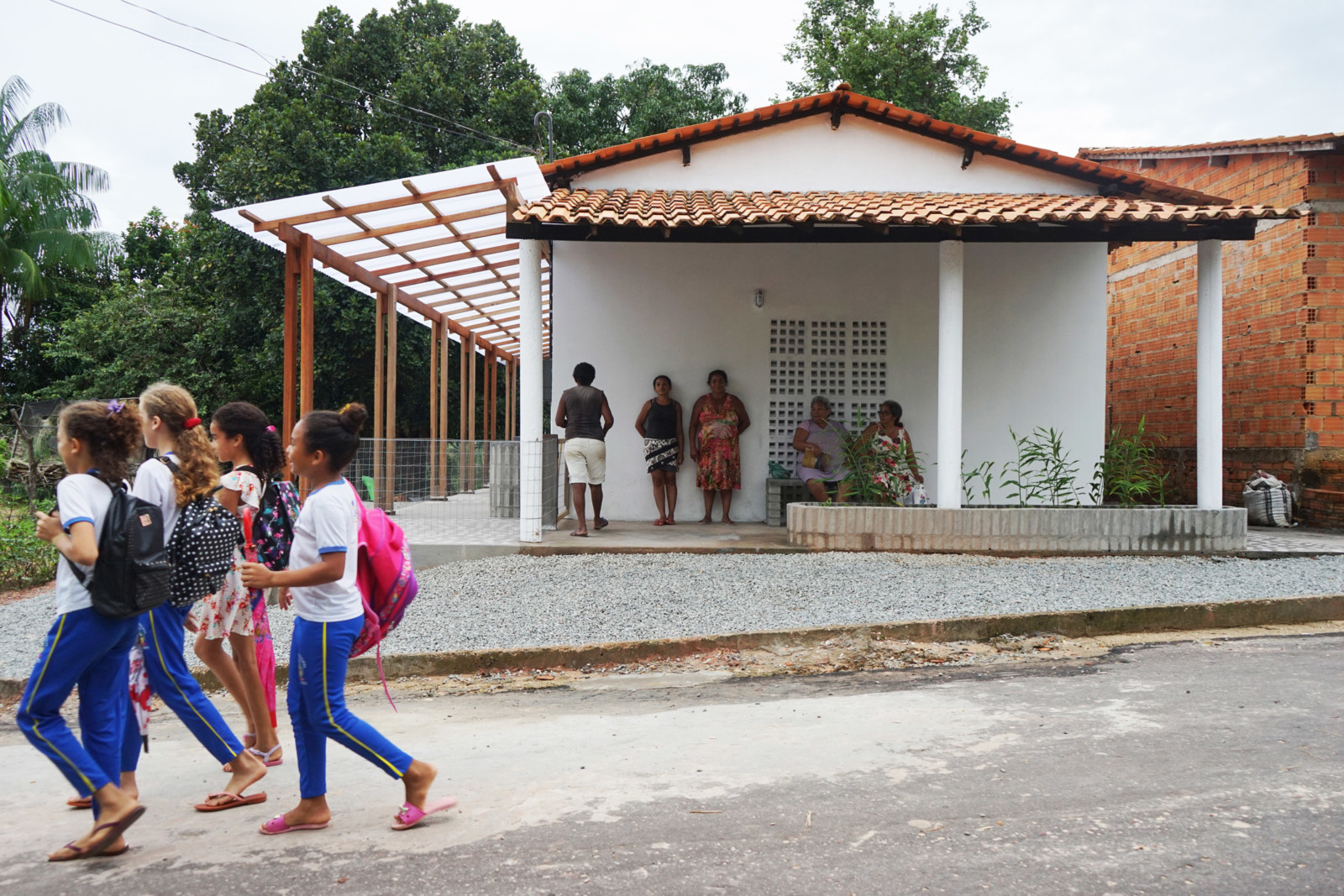
Estudio Flume also added a new covered access and breakout area at the front of the building that features a planter and a bench made with concrete pavers, and acts as a meeting point between the quebradeiras and the community.
The refurbishment also included a new ceiling attached to the existing timber roof structure, as well as a new skylight to create more natural light in the workspace.
Though budget was limited, the studio aimed to make the project as sustainable as possible.
Estudio Flume在建築物的前面還增加了一個新的有蓋通道和休息區,其中包括一個用混凝土攤舖機製成的花槽和長凳,並且是quebradeiras和社區之間的聚會點。
翻新工程還包括將新的天花板連接到現有的木材屋頂結構上,以及新的天窗以在工作區中創造更多的自然光。
儘管預算有限,但工作室的目標是使該項目盡可能可持續。
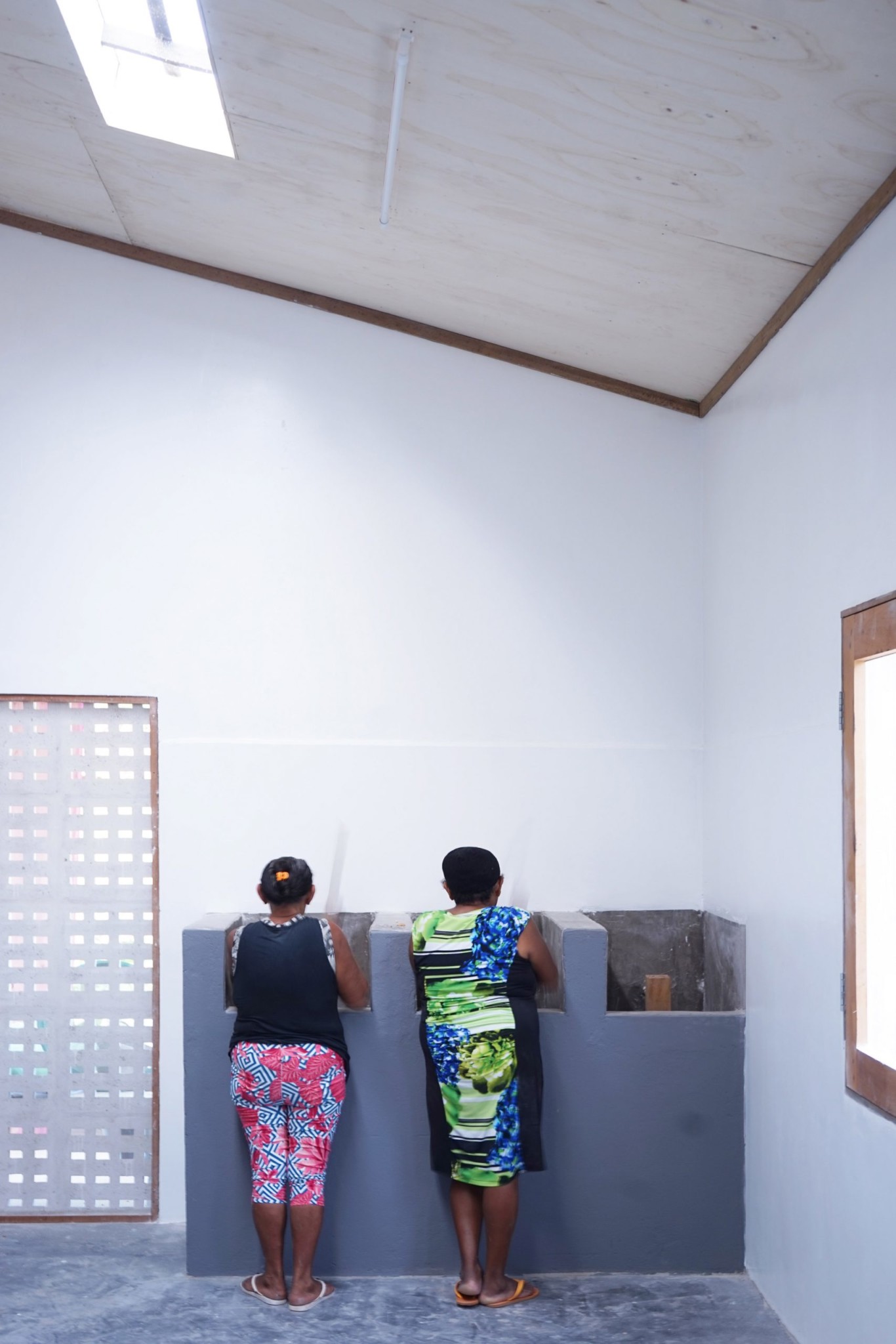
“The project used locally sourced and manufactured materials wherever possible, incorporates water harvesting system and passive thermal control techniques such as natural shading, cross ventilation and maximise daylight protecting from direct sunlight,” Monteiro said.
Estudio Flume also used a translucent sheet and wood for its design for a fisherman’s kiosk on Brazil’s Jaguanum Island.
Other recent projects in Brazil include MF+ Arquitetos’ Cobogós House, which is configured as a series of blocks, and Arquipélago Arquitetos’ rammed-earth House in Cunha.
蒙特羅說:“該項目盡可能使用本地採購和製造的材料,並結合了集水系統和被動式熱控制技術,例如自然遮蔽,交叉通風,並最大限度地防止日光直射。”
Estudio Flume還為巴西Jaguanum島上的漁民亭設計了半透明的板材和木材。
巴西最近的其他項目包括MF + Arquitetos的CobogósHouse(配置為一系列街區)和ArquipélagoArquitetos的位於Cunha的夯土房。
FROM:https://www.dezeen.com/2020/10/14/estudio-flume-babassu-flour-factory-serra/

